Development Projects
Update
Update
We are in the process of updating this page to make more information about our projects accessible. If you have any questions about a project please email us at heif@humboldt.edu to request more information.
2019
2019
Project: Fume Hoods
Team: Jennifer Barranco, Alex Eckert-Ross, Ernesto Silva
Statement:
Fume Hoods are safety equipment used in laboratories to protect against volatile fumes. Fume hood energy consumption is 1-3.5 times that of a typical household. Currently, the extent of fume hood energy consumption is not widely recognized by students. A team of student energy analysts will be tasked with promoting a behavioral change campaign and determining fume hood energy consumption on campus.
Project: Green Space
Team: Jackson Patrick Reid, Melissa Savage
Statement:
The Humboldt campus has many lawns that require great amounts of water and fuel, and contribute to campus greenhouse gas emissions. HEIF’s Greenspace Management Team has investigated medians and pocket lawns across campus and proposed the following lawn conversions for a pilot:
Convert Library Oak Lawn
Convert Van Matre Lawns
Convert Harrry Griffith Hall Courtyard Lawns
These conversions are expected to reduce water and fuel consumption for each area
Project: E-Bike
Team: Aneika Perez, Toni Castillo
Statement:
The purpose of this project is to provide a reliable and suitable form of transportation for the Compost Squad from Waste Reduction and Resource Awareness Program (WRRAP), to collect organic material within the Cal Poly Humboldt (Humboldt) campus. Currently, WRRAP is borrowing Humboldt Facilities Management electric vehicle to collect compost. Due to the difficulties of scheduling the electric vehicle is not a long-term option for WRRAP. We are providing electric bike alternatives that meet the current and future needs of WRRAP’s composting program. With an electric bike, WRRAP will gain sustainable transportation independence, promote Humboldt’s mission of being a sustainable campus, and meet HEIF’s five goals.
2018
2018
Fisheries Pumps
This project will replace the existing water pumps and electric motor system used at the Humboldt Fish Hatchery with new energy-efficient models. Presently, the Humboldt Fish Hatchery system is maintained by four electric motors and pumps, two which run constantly and two that serve as back-ups. The current electric motors are dated and do not meet current Department of Energy standards. This project will replace the existing four motor system with two energy efficient variable speed electric motors, pumps, and an integrated control system. Expected benefits include:
- reduced energy expenditures incurred by hatchery operations by $14,450.40 annually (and a reduction in greenhouse gas emissions)
- higher capacity and reliable water flow will serve to increase the number of tanks that can be used for teaching and research, and provide improved water quality necessary to ensure the ethical treatment of fish held in captivity.
A benefit of this project is its simplicity, as it requires replacing the existing pumps, which can be done while the hatchery runs using a backup system. It is anticipated that the replacement would take a couple of days of labor to complete.
CCAT Mini-Split
This project would seek to reduce CCAT’s dependence on wood stove heating especially during the winter, which would reduce air pollution from the smoke. CCAT would also become one of the first destinations on campus that would commit to becoming a zero net energy building. Additionally, this project would demonstrate another piece of Appropriate Technology that aligns with CCAT’s mission.
Earth Tub Cover
The basis of this proposal is to improve the efficiency and stability of Cal Poly Humboldt’s campus-wide composting system by applying a sheet of canvas or other material stretched on a frame and used to keep the rain off during the wet seasons. This commercial enclosed composting vessel known as the Earth Tub has been established at the university since 2013 and was purchased with a grant from the Humboldt Loyalty, Parent and Family Fund. Managed by the Associated Student-led program the Waste Reduction Resource Awareness Program, the Compost Squad operates the Earth Tub to help divert nearly 300 pounds of Humboldt’s food waste every week. By keeping this waste out of our landfill, we offset Carbon Dioxide and methane emissions from escaping into the atmosphere. For the Earth Tub to effectively reduce the university’s ecological footprint the operators must properly maintain the moisture content of the food waste in order to successfully convert it into a rich soil amendment. Our current approach of covering the Earth Tub with tarps has not been effective and does not prevent water from entering the composting vessel. The ideal resolution to this problem is to build a covering shelter or canopy that can protect the Earth Tub from the heavy rainy weather. As a result, the students in the Compost Squad would have a more productive operation of Humboldt’s composting system and then provide more and richer soil amendment for the campus community.
Electric Heat Pump feasibility
The objective of this proposal is to suggest the Humboldt Energy Independence Fund (HEIF) initiate a project to convert campus building heating from natural gas systems to electric heat pumps. The motivation behind this transition is in the reduction of Cal Poly Humboldt’s (Humboldt) carbon footprint. Unlike natural gas boilers, electric heat pumps do not burn fuel onsite to generate and move heat. The combustion process that occurs when burning natural gas has a direct measurable output of
greenhouse gases (GHG). Additionally, carbon emissions of air source heat pumps are currently estimated to be 61-169 grams of CO2 per kilowatt-hour of heat (see Appendix). Comparatively, natural gas boilers emit at a much larger range of 210-380 grams of CO2 per kilowatt-hour of heat produced. Additionally, the California Energy Commission currently has set a target of 50% renewable generation by 2030, which provides further incentive to transition to electric heating in the near future (California
Energy Commission, 2015).
Field House LED retrofit
The Field House could benefit from replacing outdated metal halide lighting with LEDs.
Switching to LEDs could reduce energy consumption by 50% and substantially decrease
maintenance as long-lived LEDs need to be replaced less often than the current technology. Additionally, LEDs would provide safer, higher quality light for athletes and other field users by creating more even illumination on the field and decreasing the amount of flicker and buzzing from the metal halide lamps. As Cal Poly Humboldt continues to reduce its environmental impact, HEIF is a great entity that leads the way to make our institution energy independent. This project will help move the university toward a sustainable less harmful means to lighting.
PV Array Feasibility
We are proposing that a photovoltaic (PV) array be installed on campus. We are
proposing that a PV array is installed on the roofs of the College Creek dorms and/or on top of covered parking that could be built in parking lot G14 and G15. Having solar panels on campus would help Humboldt in becoming a more sustainable campus and would reduce Humboldt`s dependence on outside energy sources. The upfront cost of the PV array would pay itself back in years to come because it would offset electricity costs that would otherwise need to be paid by the university.
This project could also be a learning opportunity for students to become more knowledgeable about renewable energy; something that the students on our campus are very passionate about. Having another PV array be installed would promote our campus towards becoming more sustainable and push us to become one of the most sustainable colleges in California, and hopefully one day, the country.
2017
2017
FALL 2017
Science D Interior Lighting Upgrade
Light Emitting Diode (LED) lighting technology is becoming a more economically and environmentally friendly alternative to other lighting solutions; therefore only LED solutions are being analyzed for this project. Because the majority of the buildings at Cal Poly Humboldt currently encompass various fluorescent lighting systems, we are proposing a LED lighting retrofit for the Engineering and Biological Sciences Building (Science D). This proposal entails a background of the existing lighting technologies, energy and emissions cost with the current technologies, as well as with the proposed product, 10 Watt 4” LED T8 InstantFit Lamps. Implementing LED lamps in Science D will show what the culture of Cal Poly Humboldt embodies; A campus that is striving for and promoting energy efficiency. This proposal is inspired by a HEIF proposal from Fall 2015, “HEIF Proposal: LED Lighting Retrofit” by Zander Kurnizki and Danielle Stepien. The 2015 proposal included Science D as a part of a larger LED retrofit where multiple alternatives were given, including; updating the current lighting infrastructure to advanced controls, changing fixtures, or changing lamps. We used the previous proposal to guide our research and find an option that would be most feasible for an LED retrofit in Science D.
Marine Lab LED Retrofit
Redwood Coast Energy Authority (RCEA) surveyed energy that could be saved if Cal Poly Humboldt’s (Humboldt) Telonicher Marine Laboratory (TML) were to retrofit their lighting to Light-Emitting Diode (LED). Using resources provided by Humboldt Energy Independence Funds (HEIF), a student-led research into the cost and feasibility of retrofitting the marine lab into LED.
Streetlight LED Upgrade
Cal Poly Humboldt uses high-intensity discharge (HID) lighting for almost all of its street lighting needs. This project aims to reduce Cal Poly Humboldt’s energy expenditures, indirect greenhouse gas emissions, and reduce light pollution while improving campus safety by retrofitting the current street and pathway lights with efficient LED luminaries. An inventory of lights was conducted to identify fixtures for retrofit. 124 fixtures were identified and include three fixture types: two Acuity
brand antique lamps, and the more traditional cobra head type lamp. Upgrading these fixtures to LED lights would save Humboldt 15.8 MWh/yr, which equates to 3.4 tons of CO2 per year. With maintenance costs included, upgrading to LED lighting would save Humboldt approximately $5060 per year. Initial investment costs are significant with each fixture costing $1000 or more, giving a total project cost of $170,000. With a savings of $5060 per year, this gives a simple payback period of 33.6 years indicating that this is financially infeasible due to the high initial cost. It is recommended that more research is done by experts to possibly identify a more cost-effective retrofit approach for the antique style lighting. Given Humboldt’s commitment to carbon neutrality by 2030 and history of sustainable leadership, it is recommended that this project is pursued further.
HEIF Film
Shower Behavior Change
The incentive of a community-based initiative to reduce resource consumption on campus goes beyond that of purely economic in nature. Encouraging sustainable lifestyle habits via the implementation of appropriately designed and user interactive projects have the potential for wide-scale impact with a high degree of longevity; the campus dormitories, specifically are representative of an educational platform that can be utilized to teach residents how to live more sustainably, thus fostering in individuals values that can be extrapolated and employed throughout their life. Installation of these values in rising generations is an integral part of societal adaptions that occur within the context of increasing anthropogenic impact on the global environment, not limited to climate change. It is with this design objective in the mind, that the Humboldt Energy Independence Fund (H.E.I.F) shower water reduction team has structured this project outline. Essentially, our project is the equivalent of a pilot study intended to test the effectiveness of the available shower reduction hardware technologies on the market, in a dormitory setting. Four technologies have been selected, based on the research conducted by the H.E.I.F. shower water reduction team: team member Cassidy Barrientos, team member Cody Hennings, project manager Aedan McCluskey and Associate Director of Housing, Steve Mackenzie. This hardware technologies are as follows: Amphiro, EvaDrop, Evolve TSV and Hydrao.
2016
2016
2016 Fall Projects
Project proposals development teams for Fall 2016:
CCAT Water Heater Replacement
CCAT currently has a solar thermal hot water heater that is designed to store heat from incoming solar radiation in refrigerant and distribute it to a storage tank that supplies domestic hot water. Unfortunately, the coil used to transfer the hot refrigerant into the hot water tank has broken. Without this coil, the water in the tank is heated by a pilot light which burns natural gas. We would like to replace our current hot water tank with one that has a working solar thermal coil. We would also like to install an inline heat pump which would be connected to the outside of the facility and extract heat from outdoor air and deposit it into the domestic hot water tank. One of CCAT’s core objectives is to reduce our carbon footprint. By cutting out natural gas, we will be one step closer to achieving our goal of becoming 100% electrically powered. Once all of our appliances run on electricity it would be possible to offset that energy usage through the installation of additional photovoltaic solar panels on the roof. Pictured below are development team members Akash Dixit and Alyssa Marquez.
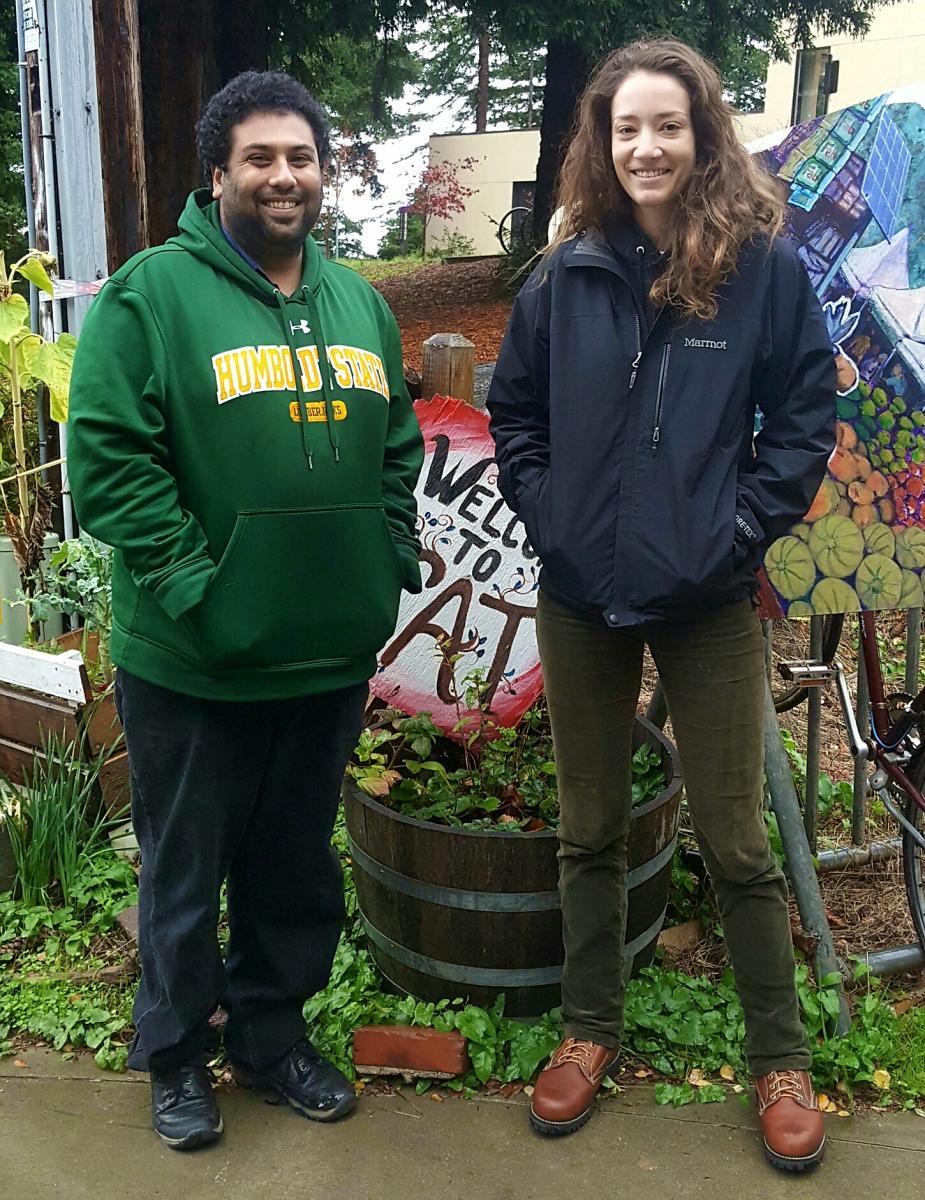
Daylight Harvesting
By installing photosensors and connecting them to existing lights in rooms that receive sufficient sunlight, will help reduce the need to turn on the lights, and reduce the school’s energy consumption. This method of using natural sunlight to light our buildings is called Daylight harvesting. This project would focus on setting up daylight harvesting system at J dining hall, student recreation center, and student recreation and wellness center. These 3 specific sites receive enough sunlight and have the potential for making daylight harvesting very effective. Daylight harvesting systems decrease the use of electrical light as daylight contribution increases. The desired amount of light can be set and lights can still be manually controlled. Pictured below are development team members Jessica Solomon and McKenna Rayburn.
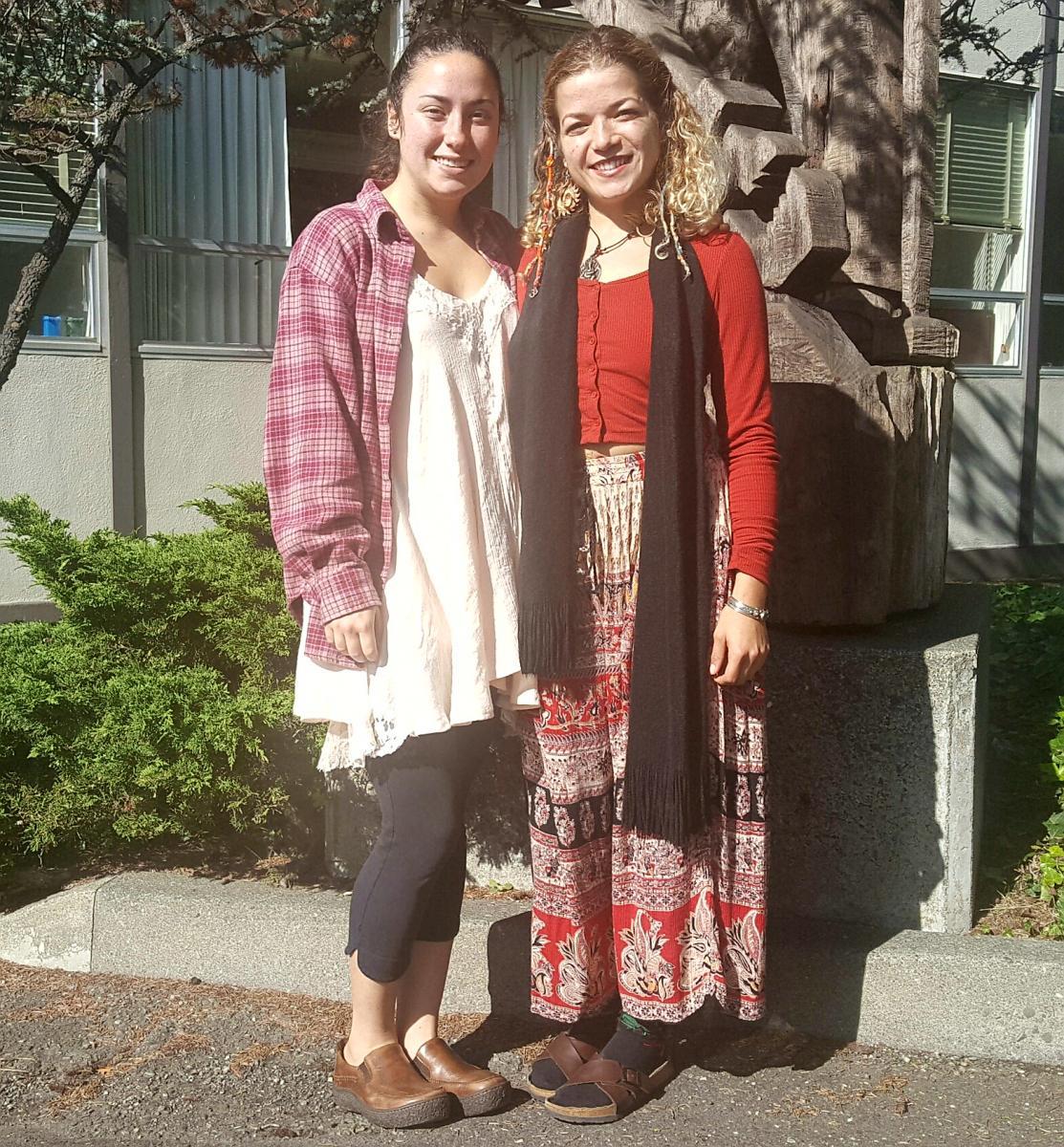
Hydration Station
Similar to what has been done in the past, the installation of water bottle fillers onto campus drinking fountains will help save energy, reduce waste, and make it convenient for both students and faculty to fill their water bottles on campus. Facilities Management will order 4 water bottle fillers that attach to existing drinking fountains and install water bottle fillers in the buildings which are lacking them. They will also order a separate hydration station with a built-in “green ticker” feature which keeps track of the number of water bottles that are saved from being wasted; they will install this hydration station in the first floor of the Forestry building to replace the outdated drinking fountain that currently exists in that building. Pictured below are development team members, Megan Moore and Emily Johnson.
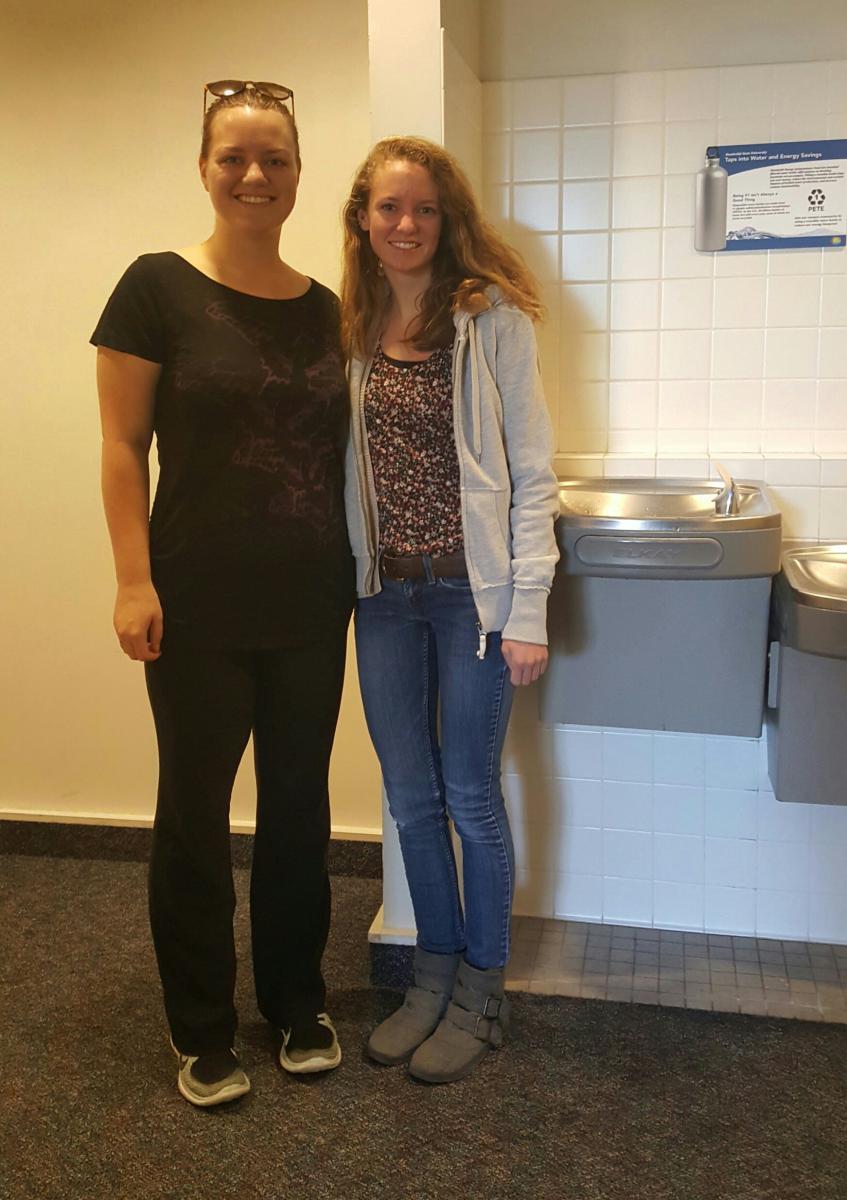
Smart Parking Infrastructure
To decrease on-campus parking congestion and decrease carbon dioxide emissions associated with vehicles circling Humboldt parking lots hunting for parking spaces, we are suggesting the installation of smart parking infrastructure in Humboldt parking lots. Smart parking systems give commuters real-time updates on parking space availability; anecdotal evidence suggests students have spent hours circling the parking lots searching for spots. By showing which parking spots are available where emissions associated with this idling will be abated. Pictured below are development team members Amanda Lagasca and Ty Muhovich.
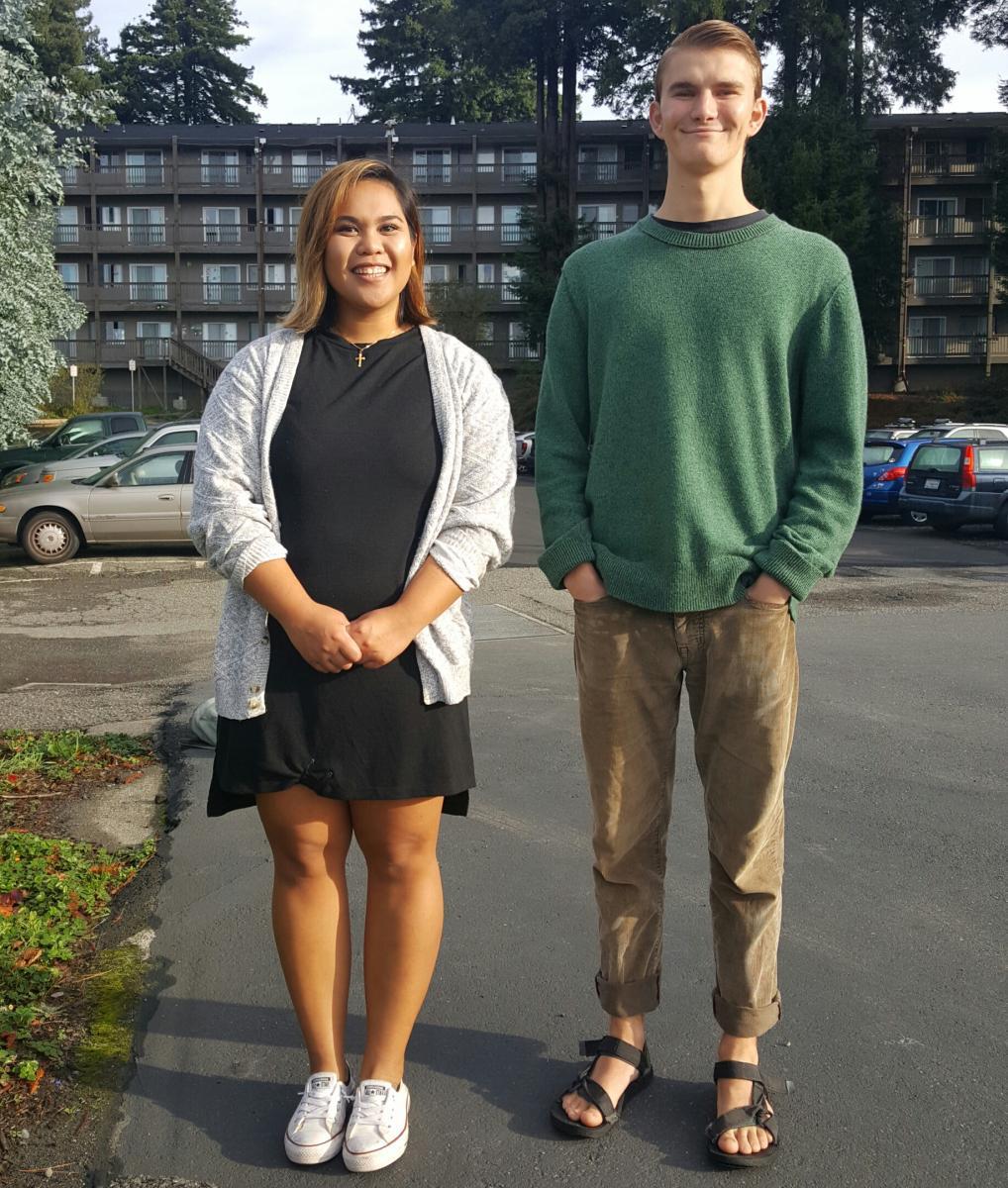
Solar Powered Benches
It is highly common that students today have personal devices on their person and use them regularly. Having the ability to charge those devices using power from the sun could foster more environmental awareness as charging personal devices is directly related to student daily lives. Students who charge their devices on the solar charging station will be less likely to use outlets installed in buildings on campus that use energy obtained from other sources. Measuring systems could be installed along with the charging station itself to show the use and benefit of solar charging devices.
SERC Solar Array
Lowen Hobbs and Jake Rada were hired by HEIF to produce a proposal for a solar array installation on the Schatz Energy Research Center's (SERC) roof on campus. Through donations of solar panels and design work from current Solar City employees that are Humboldt and SERC alumni, much of the project's immediate needs have already been successfully addressed. Eighty solar panels will be installed on SERC's largest south-facing roof to create over 20kW[DC] power that will offset a small portion of Humboldt's utility bill. This project will include a display system that will both educate and entertain passerby with fun facts and statistics about the solar array, as well as other SERC and HEIF projects.

The Campus Wall
Campus wall is essentially a buying, selling, and trading hub for goods and services that are limited only to others at your university. It is a website already utilized by dozens of universities across the country, and with funding from HEIF, Cal Poly Humboldt would be able to create an account there as well and make the resource free to students on campus. Everything posted to the site is seen only by other Humboldt students, making it a safer, easier option for exchanging goods. Campus Wall works to reduce waste and dumping by promoting exchange and reuse in a safe environment. Pictured below is Anne Maher and Tessa Lance, development team members working on the project.

Compost Bins
In coordination with the re-launch of the Food Waste Diversion Program at Cal Poly Humboldt, four permanent compost bins will be purchased and installed at specific locations throughout campus. Led by the Waste Reduction and Resource Awareness Program (WRRAP), this project aims to improve compost bin accessibility on campus. Furthermore, the project encourages the campus community (students, staff, and faculty) to be active participants in practicing zero-waste principles by diverting compostable waste from landfill-bound waste. Pictured below are development team members, Shohei Morita, and Kelly Fox.
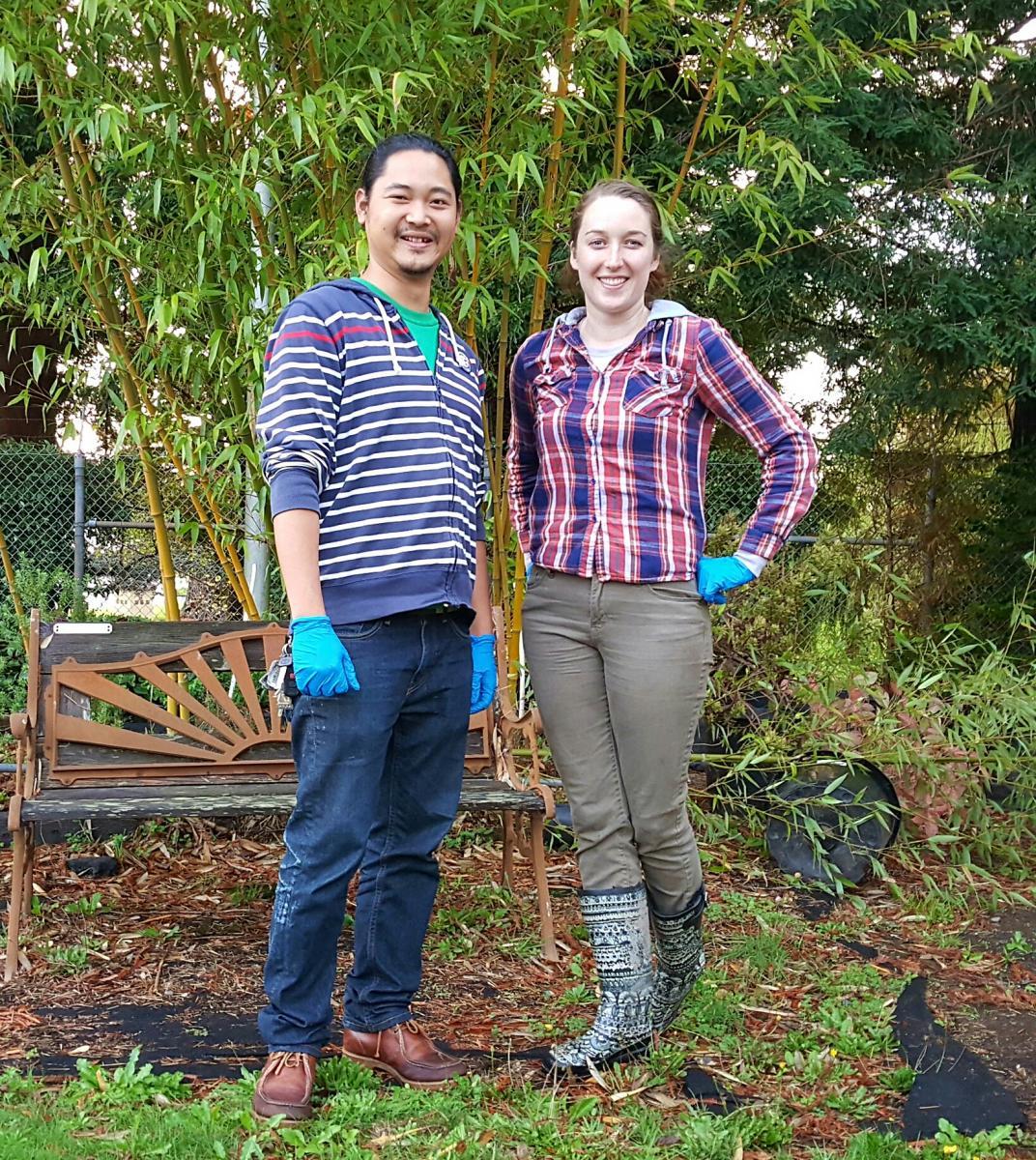
2015
2015
Music Art Lighting LED Retrofit
An analysis was conducted to evaluate the benefits of replacing the exterior lights of the Art Quad area with LED. The exterior lights of Theatre Arts, Music A, Art A, Music B, Art B, and Siemens Hall, were surveyed and assessed for energy use, energy cost, and lighting aesthetics. A photometric model was then used to select the lumen output of the new LED lights. In areas that are currently underlit by the existing lights, larger LED lights were selected. By replacing insufficient lights with appropriately sized lights, cost and energy savings are compromised, but the aesthetics are improved and campus lighting standards are met. Retrofitting all the existing exterior lights in the Art Quad would cost $32,000 and produce annual energy savings 13,500 kWh resulting in a cost savings of $1600 annually and a payback period of 19 years. The LED lights have a lifetime of 12-23 years, meaning that project would likely not produce net savings in its lifetime. While the economics of retrofitting the exterior lights may not be motivating, the energy savings of the retrofit will support both HEIF and Humboldt’s missions on sustainability and will improve the aesthetics of the campus.
Housing Lighting LED Retrofit
The project area encompasses the following buildings, all of which are operated by Humboldt housing; Cypress, Jolly Giant Commons, and the Hill for a combined fixture count of 312 that have one of four bulb types installed. The four bulb types include LEDs, high-pressure sodium, metal halides, and fluorescents. The fixtures in Cypress can be replaced with LEDs for 12-year savings of 15,075. The fixtures in the Jolly Giant commons can be replaced with LEDs for a savings of $775. Replacing the fixtures in the Hill would cost $325 over 12 years. Making all of the recommended replacements will save the university 16,175 over the next 12 years.
Restroom Hand Dryer Retrofit
2014
2014
FALL 2014
Bi-Level LED Walkway
Bi-level LED Parking Lot
Greenhouse HVAC Retrofit
Cold Water Laundering Program
Natural History Museum PV Solar
Green Workplace Equipment